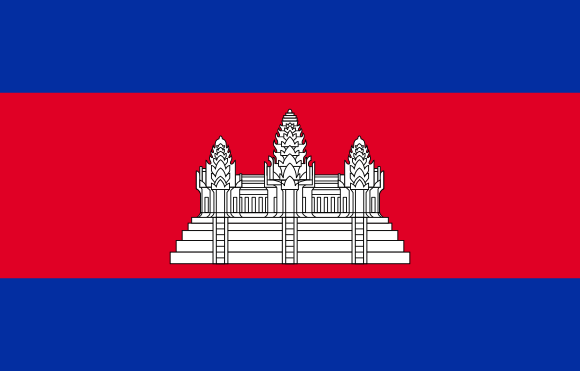At a glance
CDC works with partners in Cambodia to build sustainable public health capacity, strengthen laboratory systems and surveillance networks, deliver high-quality HIV and TB diagnostic, treatment, and prevention services, and respond swiftly to disease outbreaks at their source, preventing health threats from reaching the U.S.

Strategic focus
The Royal Government of Cambodia (RGC) is a global leader in addressing the HIV epidemic, providing HIV treatment to 98 percent of people living with HIV (PLHIV) who are aware of their status. Since 2002, the U.S. Centers for Disease Control and Prevention, through the U.S. President’s Emergency Plan for AIDS Relief (PEPFAR), has supported the RGC in strengthening HIV diagnosis, treatment, and prevention services nationwide. CDC’s goals are to fully transition the HIV response to the government and ensure sustainable public health systems capable of detecting and responding to emerging infectious diseases.
Read more about CDC's most recent key activities and accomplishments below.
Building public health capacity
- Utilized effective methods to find more people with undiagnosed HIV, such as notifying and testing partners of PLHIV, gathering risk information, accessing outreach and social media efforts, and improving HIV risk communication.
- Implemented a test that can identify recent HIV infections, support recent HIV infection surveillance, and allow the RGC to respond quickly to emerging patterns in ongoing HIV transmission.
- Provided technical assistance to the RGC on innovative measures that focus on preventing HIV, such as long-acting injectable Cabotegravir (CAB-LA), dapivirine vaginal ring (DVR), mobile and tele-PrEP, and Doxycycline Post-Exposure Prophylaxis (doxy-PEP).
Strengthening laboratory systems and networks
- Ensured that all PLHIV had their viral load tested and that results were returned quickly to providers and patients.
- Improved laboratory performance and quality assurance by implementing the Laboratory Quality Management Systems approach and used state-of-the-art technology for viral load testing.
- Supported the Ministry of Health to achieve international organization for standardization (ISO 15189) at two public health laboratories.
- Linked HIV information systems to monitor the care of PLHIV in real-time across the clinical cascade, from HIV diagnosis to treatment to viral suppression. Using data will improve clinical decision-making, patient outcomes, and quality of care.
HIV prevention and treatment
- Ensured all PLHIV begin treatment on the same day of their diagnosis, have access to treatment (including dolutegravir-based regimens), and are on tuberculosis (TB) preventive treatment.
- Ensured PLHIV have access to six months of medication when clinically stable.
- Identified patients who have stopped treatment and getting them back on treatment.
- Improved counseling and support services for PLHIV to help them stay on antiretroviral therapy.
By the numbers
HIV
Estimated HIV Prevalence (Ages 15-49)
0.5% (2023)
Estimated HIV Deaths (Age≥15)
Reported Number Receiving Antiretroviral Therapy (Age≥15)
TB
Estimated TB Incidence
335/100,000 (2023)
1.3% (2023)
TB Treatment Success Rate
96% (2022)